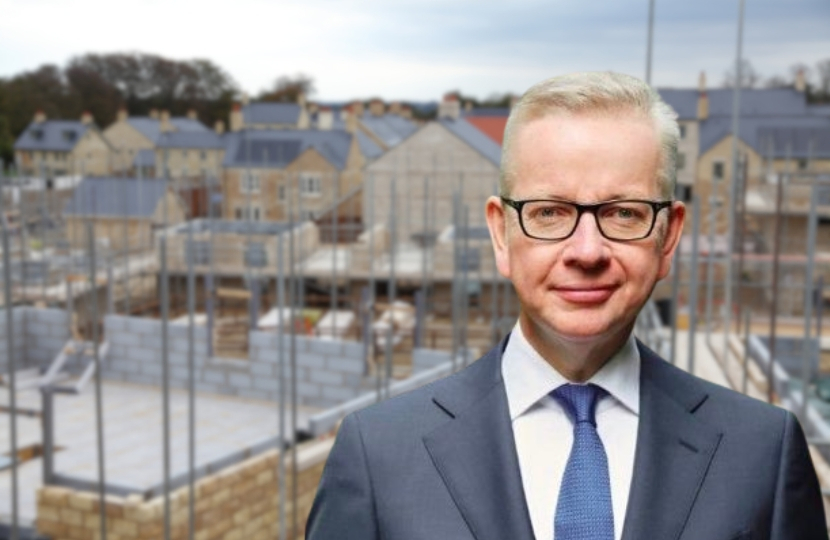
In a landmark move today, the Government has announced an ambitious overhaul of planning regulations, aimed squarely at facilitating the development of homes on brownfield sites whilst steadfastly protecting the Green Belt.
This initiative marks a significant step in the government's broader strategy to combat the ongoing housing crisis by simplifying the redevelopment of previously utilised land within urban locales. The essence of this reform is to encourage councils throughout England to adopt a more adaptable approach towards planning.
This is especially pertinent in larger cities that have historically struggled to meet their housing construction benchmarks. The introduction of a "brownfield presumption" is at the core of this initiative, designed to expedite the approval process for brownfield site development. This policy shift is expected to play a pivotal role in increasing the availability of housing for young families and others in desperate need of accommodation.
Prime Minister Rishi Sunak and Michael Gove MP, in his role as Housing Secretary, have both articulated the Government's commitment to a "brownfield first" strategy. This approach is intended to boost housing availability in areas with the highest demand, such as major cities, without impinging on the countryside and Green Belt regions. Rishi emphasised the Government's resolve to build homes in appropriate locations, thereby preserving the country's cherished rural landscapes whilst addressing urban housing needs.
Michael underscored the importance of these reforms in addressing the shortfall in housing delivery within key urban centres, stating:
"Our new brownfield presumption will tackle under delivery in our key towns and cities – where new homes are most needed to support jobs and drive growth."
This initiative represents a concerted effort to reinvigorate urban areas with new housing projects that are vital for sustaining economic growth and job creation.
To support these initiatives, the Government has not only launched a public consultation on the proposed changes but has also introduced legislation aimed at extending current permitted development rights. This legislative move is designed to significantly ease the process of converting commercial buildings into residential homes, thereby repurposing unused and derelict structures into valuable housing stock.
The response from the industry to the Government's announcement has been overwhelmingly positive. Leaders from across the housing and development sectors have lauded the reforms as a crucial step forward. Mark Allan, Chief Executive of Landsec, expressed his support for the emphasis on urban brownfield regeneration, highlighting the potential to unlock more homes and jobs, thereby enhancing city living standards.
David Thomas, Chief Executive of Barratt Developments, welcomed the Government's efforts to streamline planning permissions, especially for complex and resource-intensive brownfield projects. He remarked:
"We welcome any efforts to make it easier to get planning permission, particularly for brownfield regeneration, which is already naturally a more complicated and capital-intensive process."
This reform is not just about accelerating housing development; it's also about making urban areas more liveable and sustainable. By focusing on brownfield sites, the Government aims to minimise the environmental impact of new construction, preserving green spaces and reducing urban sprawl. This approach aligns with broader environmental objectives, including enhancing urban greenery and improving air quality, making cities more attractive places to live and work.
Furthermore, the initiative aims to address the affordability crisis in the housing market. By increasing the supply of homes in urban areas, the Government hopes to stabilise housing prices, making homeownership more accessible to a broader segment of the population. This effort is particularly significant for younger generations and low-income families who have been disproportionately affected by the housing shortage.
The comprehensive nature of these reforms—encompassing legislative changes, policy shifts, and industry collaboration—reflects the government's holistic approach to solving the housing crisis. By cutting through bureaucratic red tape, empowering local councils, and incentivising developers, the UK is poised to make significant strides in meeting its housing needs.
As the consultation process unfolds, stakeholders from across the spectrum will have the opportunity to contribute to shaping the future of housing development in England. The Government's commitment to implementing these changes swiftly demonstrates its urgency in addressing the housing shortage.
In conclusion, the planning reform represents a paradigm shift in the approach to housing development. By prioritising brownfield sites and streamlining the planning process, the Government is not only looking to alleviate the housing shortage but also to foster sustainable urban growth. This initiative is a testament to the Government's dedication to building the right homes in the right places, ensuring a brighter future for cities and their residents across England.


